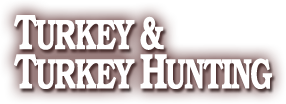by Brian Lovett, T&TH editor
OK, I didn’t tell you the entire story about whiffing on the roosted turkey.
Stoltz had actually thought about setting up farther from the bird and on the other side of its roost tree. The turkey just seemed to like to travel there. So after seeing the gobbler walk away from us the first morning, we did a 180 the next day. Also, we joined up with World, U.S. Open and Grand National calling champ Chris Parrish, of Knight & Hale.
Sure enough, the gobbler hammered from almost the same spot. As we waited patiently in a timbered bottom about 150 yards away, he flew down and shut
up. A few minutes later, however, a faint gobble let us know that he was farther up in the timber. We abandoned our setup and closed the distance.
When we reached a patch of open woods, the bird gobbled again, this time from a timbered ravine. Again, we cut the distance and ended up at a field edge. Then, however, we were stuck until the turkey sounded off.
“There he is,” Stoltz whispered.
Sure enough, the top of the bird’s fan was barely visible above the top of an open pasture ridge 100-some yards away.
We probably couldn’t call the bird in from our position, so it was decision time. Stoltz and Parrish stayed behind to call, and I slipped up to a tree just steps from the ridge. I crawled the final few feet, expecting to see that red-and-white head pop up at any second.
When I sat down, the champions began calling. The bird gobbled immediately, just 30 yards away and over the ridge. Seconds later, his white head popped up, looking for the hen. I slowly eased my gun to the right, and when Parrish yelped again, the gobbler periscoped his head and neck at 20-some steps. I dropped him in his tracks, sending his hen flying away.
Our move had worked. It was obvious the turkey wasn’t going to scream his way to a call, so we’d used patience, woodsmanship and sneaky tactis to get in his zone. The result was a fine 3-year-old Missouri longbeard.

